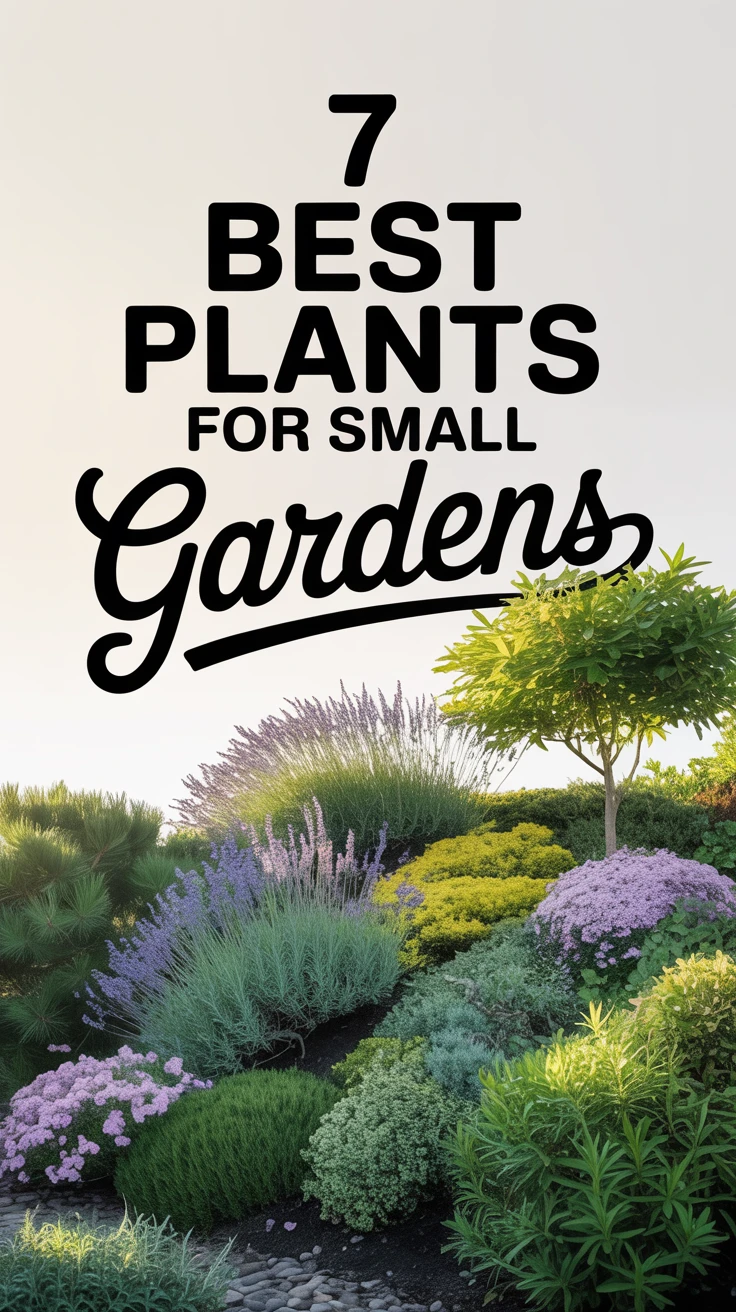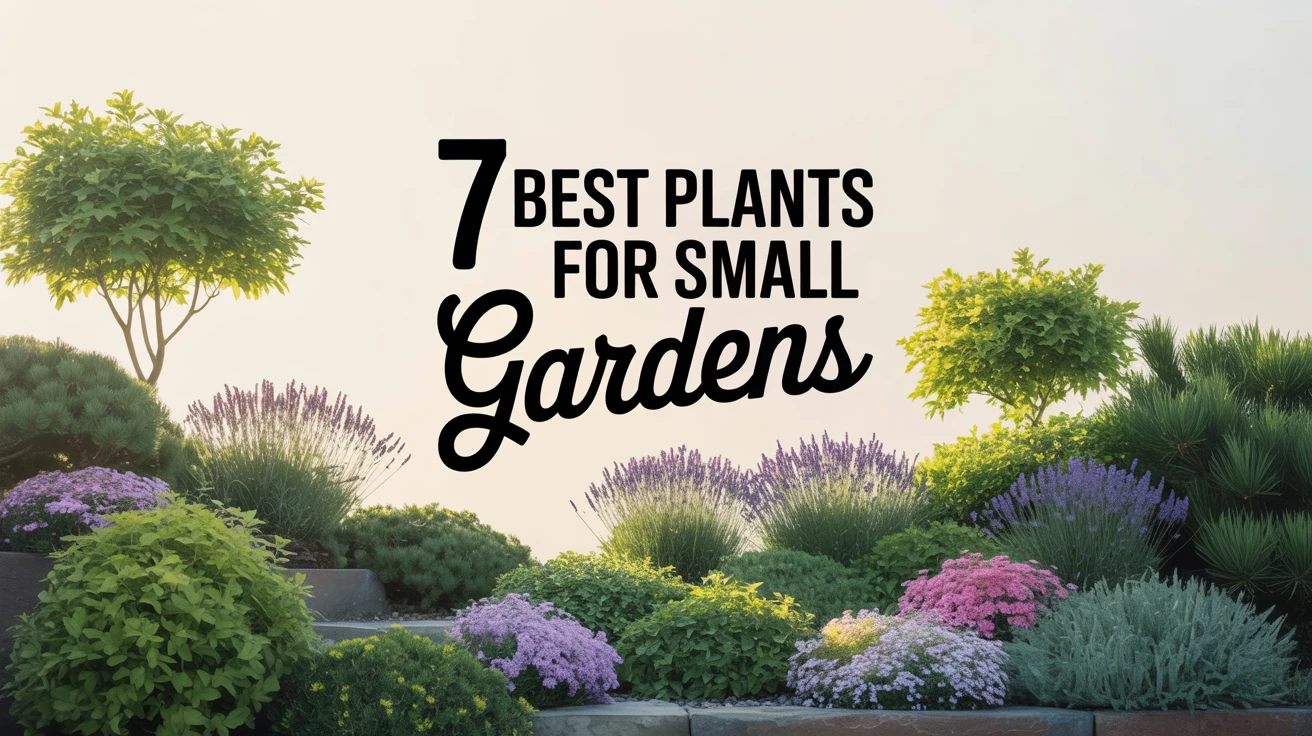
Transforming Sloped Spaces with the Right Plants
When I first moved into my home with a small sloped garden, I was initially intimidated. How could I create something beautiful on such challenging terrain? After years of experimentation (and yes, some notable failures), I’ve discovered that the right plant selection can transform these difficult spaces into stunning, low-maintenance gardens.
A sloped garden isn’t just a challenge—it’s an opportunity. With proper planning, these spaces can showcase plants in a naturally tiered display that flat gardens simply can’t achieve. The key is selecting plants that not only look beautiful but also help with practical concerns like erosion control and require minimal upkeep on inclined surfaces.
In this article, I’ll share my favorite plants that have thrived in my own small sloped garden and those I’ve helped clients install in similar spaces. These versatile performers will help you embrace your garden’s unique topography rather than fighting against it.
1. Lavender: Fragrant Elegance and Erosion Control
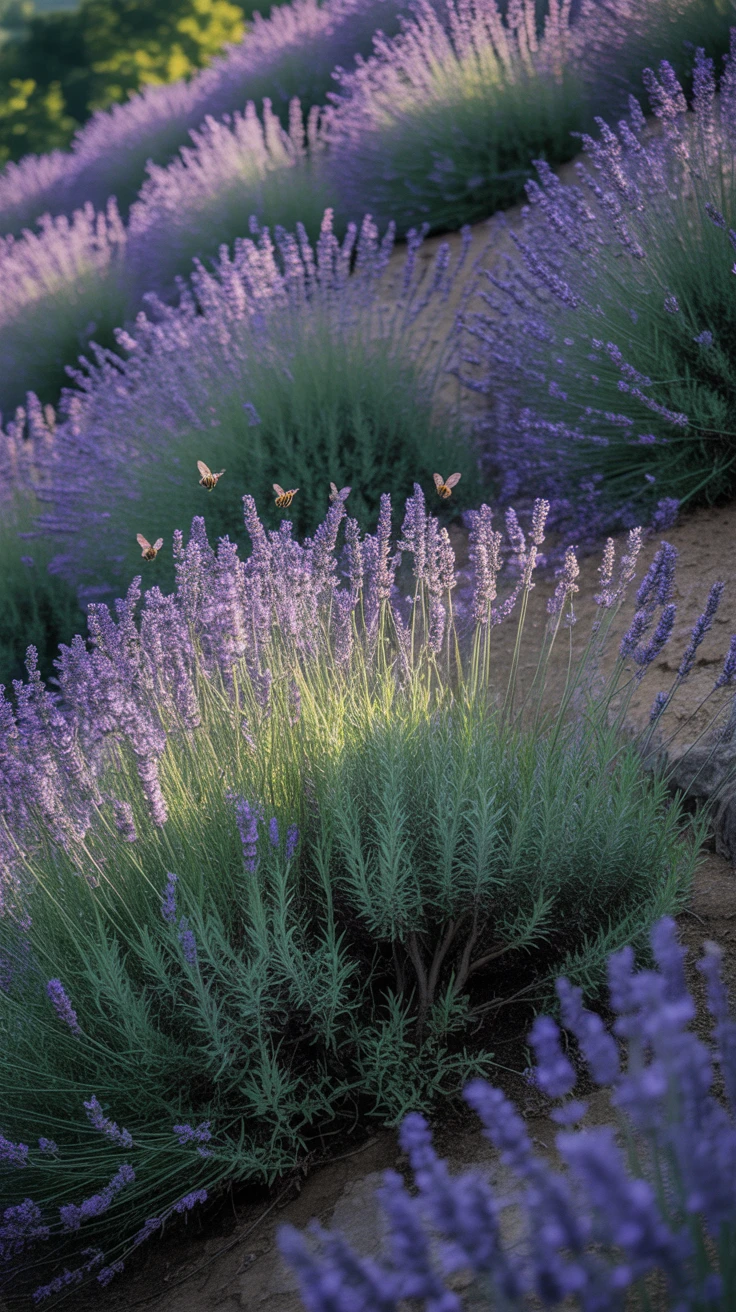
Lavender has been my go-to plant for sloped areas for years, and for good reason. These aromatic Mediterranean natives are perfectly adapted to hillside growing conditions, with their deep root systems that help stabilize soil while requiring minimal water once established.
- Thrives in well-drained soil (which slopes naturally provide)
- Drought-tolerant once established
- Attracts beneficial pollinators to your garden
- Creates stunning purple drifts when planted en masse
I’ve found that varieties like ‘Hidcote’ and ‘Munstead’ work particularly well in smaller spaces. The key mistake I made early on was overwatering my lavender—these plants actually prefer to be on the dry side, making them perfect for slopes where water runs off quickly.
Pro Tip: Plant lavender along the contour of your slope rather than up and down to maximize its erosion control benefits. I space plants about 2-3 feet apart to allow for their eventual spread while providing immediate erosion protection.
2. Creeping Phlox: A Colorful Ground Cover

The first time I saw creeping phlox (Phlox subulata) cascading down a neighbor’s slope, I was captivated by its waterfall of pink, purple, and white blooms. This low-growing perennial creates a dense mat of color that’s particularly spectacular in spring.
- Forms a tight carpet that prevents soil erosion
- Produces masses of star-shaped flowers from April to May
- Requires minimal maintenance once established
- Tolerates poor soil conditions
In my own small sloped garden, I’ve created a patchwork of different phlox colors that creates a stunning tapestry effect. The plants slowly spread over time, filling in gaps and creating an increasingly solid ground cover.
What I love most about creeping phlox is how it softens the edges of stone walls and rock gardens—a common feature in many sloped landscapes. After the spectacular spring bloom, its evergreen foliage continues providing erosion control and weed suppression year-round.
3. Juniper: Evergreen Beauty
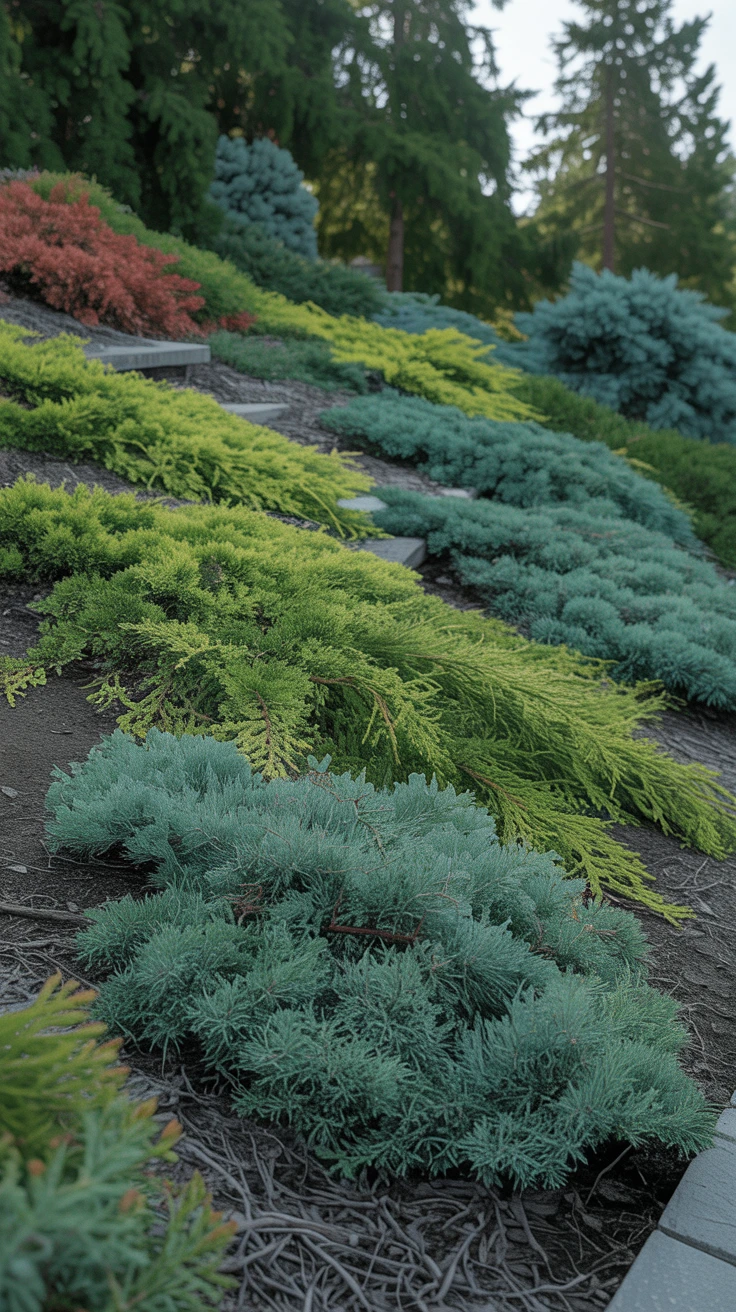
When I needed year-round structure on a particularly challenging north-facing slope, low-growing junipers came to my rescue. These versatile conifers offer fantastic erosion control with their spreading habit and extensive root systems.
- Provides four-season interest with evergreen foliage
- Extremely drought-tolerant once established
- Available in various heights, spreads, and colors
- Requires virtually no maintenance
I’ve had great success with varieties like Juniperus horizontalis ‘Blue Rug’ and Juniperus procumbens ‘Nana’ in smaller spaces. Their sprawling growth habit helps them cover significant ground without becoming overwhelming.
Pro Tip: When planting junipers on slopes, create a small level area or basin around each plant to help capture rainfall during the establishment period. I learned this the hard way after losing several plants during their first summer because water simply ran off before reaching their roots.
4. Sedum: Low-Maintenance Succulent
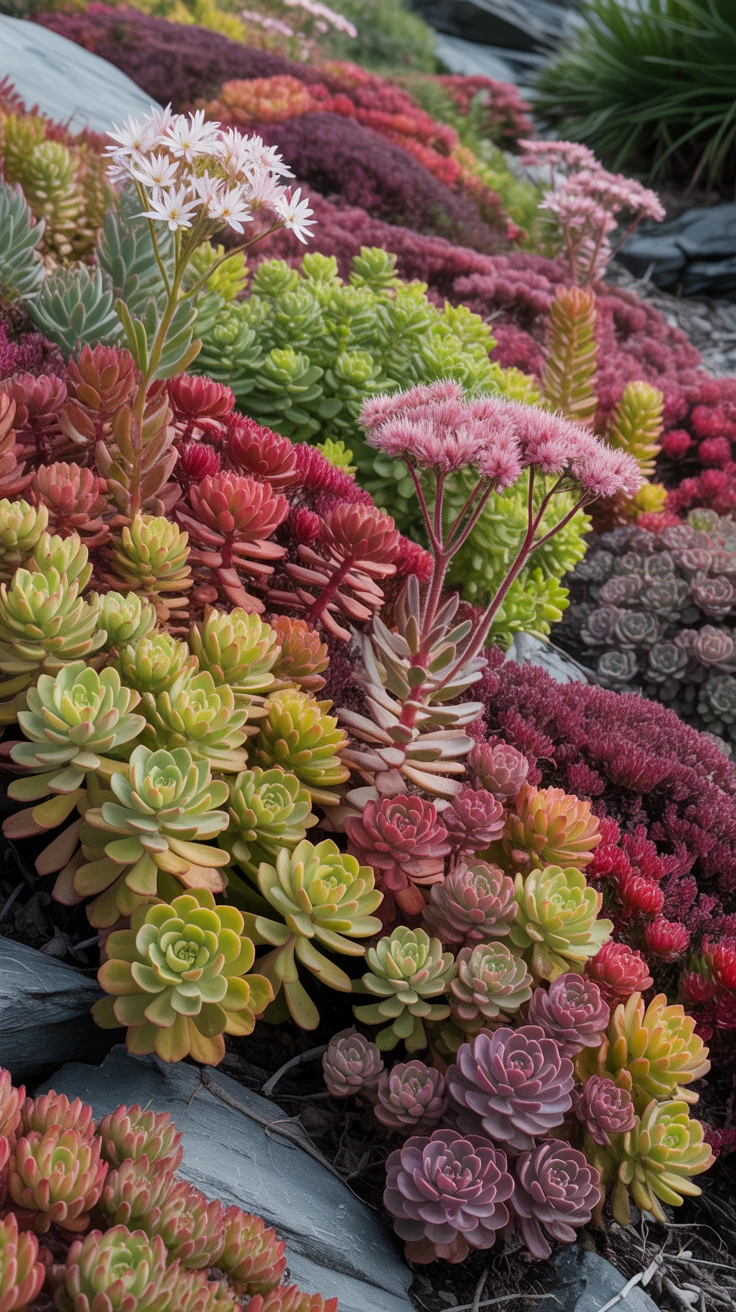
If you’re dealing with a sunny, dry slope like I was on the south side of my property, sedums (stonecrop) might become your new best friend. These succulent perennials store water in their fleshy leaves, making them incredibly drought-tolerant.
- Thrives in poor, rocky soil where other plants struggle
- Available in ground-hugging and upright varieties
- Offers interesting foliage colors and textures
- Produces attractive flowers that attract pollinators
In my small sloped garden, I’ve created a drought-tolerant tapestry by combining low-growing varieties like Sedum album and Sedum spurium with taller types like Sedum ‘Autumn Joy.’ The contrast in heights adds visual interest while still providing excellent erosion control.
What surprised me most about sedums was their ability to spread naturally over time, filling in gaps between rocks and other plants. They’re also incredibly easy to propagate—I often break off small pieces and simply press them into soil elsewhere on the slope to create new plants.
5. Rockrose: Mediterranean Flair
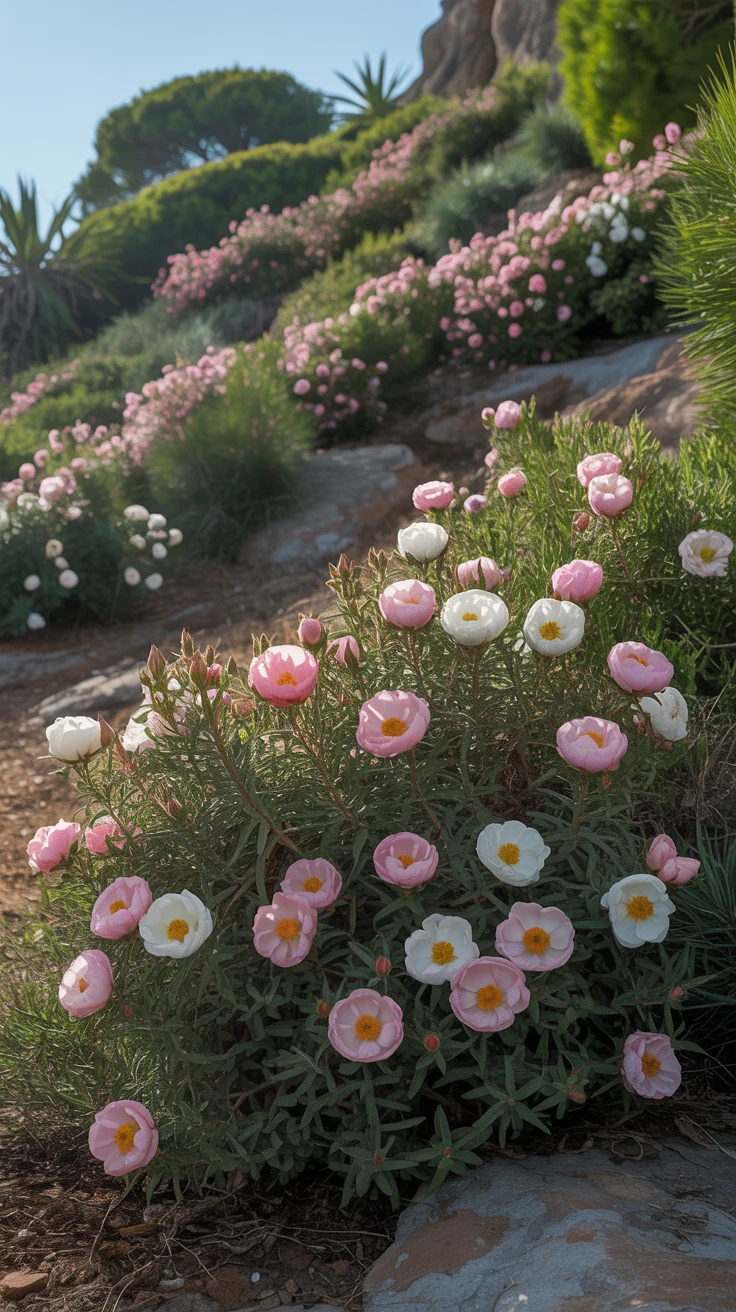
Rockrose (Cistus) has become one of my signature plants for sunny slopes. These Mediterranean shrubs are ideally suited to hillside gardens with their drought tolerance and ability to thrive in poor soil.
- Produces papery, rose-like flowers from late spring to early summer
- Aromatic foliage adds sensory interest
- Naturally adapted to hillside growing conditions
- Stays relatively compact, perfect for smaller spaces
I’ve found varieties like Cistus x pulverulentus ‘Sunset’ and Cistus salviifolius to be particularly reliable performers. Their compact size (typically 2-3 feet tall and wide) makes them ideal for smaller sloped gardens where space is at a premium.
The only maintenance these plants require is a light pruning after flowering to maintain their shape. Otherwise, they’re about as carefree as plants come, which is exactly what you want when gardening on challenging terrain.
6. Japanese Maple: A Splash of Color
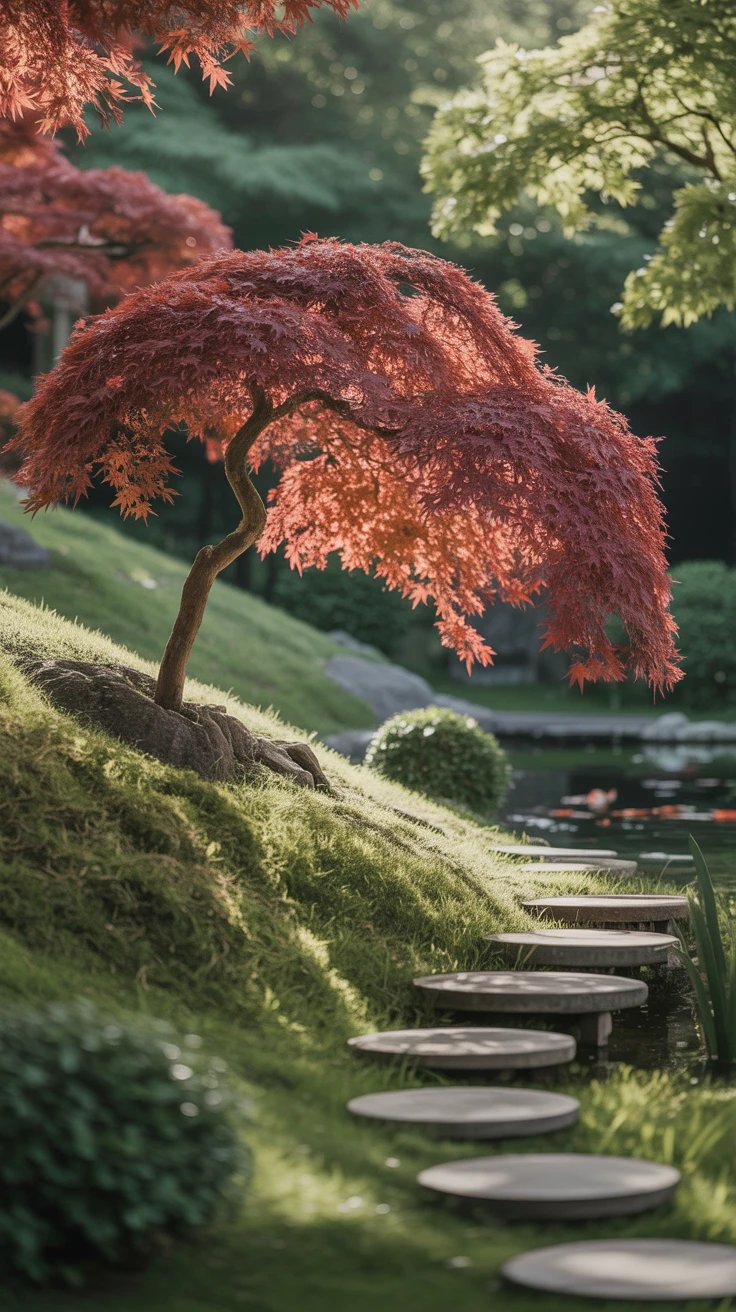
For a slope that needs a focal point, I’ve found that nothing beats a carefully placed Japanese maple (Acer palmatum). These elegant small trees add a touch of sophistication to any landscape with their delicate foliage and spectacular seasonal color changes.
- Creates a striking focal point on slopes
- Available in weeping forms that cascade down hillsides
- Offers spectacular fall color
- Works well in partially shaded slopes
In my own garden, I positioned a weeping Japanese maple (Acer palmatum ‘Crimson Queen’) about halfway up the slope where it could be viewed from multiple angles. Its cascading form echoes the natural flow of the hillside, creating a harmonious effect.
Pro Tip: When planting Japanese maples on slopes, create a level planting pocket and add a small berm on the downhill side to help retain moisture. I also apply a thick layer of mulch around the base to keep roots cool and conserve water.
7. Heather: Year-Round Interest

The final must-have plant for my small sloped garden is heather (Calluna vulgaris and Erica species). These low-growing shrubs offer something special in every season, from colorful blooms to attractive foliage that changes color throughout the year.
- Creates a dense mat that suppresses weeds and prevents erosion
- Provides blooms when many other plants are dormant
- Offers foliage in shades of green, gold, red, and silver
- Requires minimal pruning or maintenance
I’ve created a heather garden on a particularly challenging north-facing slope by mixing winter-blooming Erica carnea varieties with summer-flowering Calluna vulgaris cultivars. This provides nearly year-round color with minimal effort.
Pro Tip: For the most striking effect, plant heathers in drifts of at least 3-5 plants of the same variety. I arrange different varieties in a patchwork pattern that creates visual interest from a distance while providing a cohesive look.
Crafting a Vibrant Sloped Garden
After years of working with challenging terrain, I’ve come to appreciate how a small sloped garden can actually offer unique design opportunities. The plants I’ve shared here have proven themselves time and again as reliable performers that transform difficult slopes into low-maintenance showpieces.
The key is working with your site’s natural conditions rather than against them. By selecting plants adapted to slope conditions—those with strong root systems, drought tolerance, and spreading habits—you’ll create a garden that’s not only beautiful but also practical and sustainable.
I encourage you to experiment with combinations of these plants, mixing textures, heights, and bloom times to create a garden that offers interest in every season. With the right plant choices, your sloped garden will become your landscape’s most distinctive and captivating feature.
Frequently Asked Questions
How do I prevent erosion on my sloped garden?
The best approach is multi-layered: plant deep-rooted perennials and shrubs like lavender and juniper, use ground covers such as creeping phlox between larger plants, apply mulch to bare areas, and consider installing small terraces or retaining walls for very steep slopes. I’ve found that combining different plant types creates the most effective erosion control system.
How should I water plants on a slope?
Watering can be challenging on slopes as water tends to run off before soaking in. I recommend installing drip irrigation with emitters placed near each plant’s root zone, creating small basins around new plants to catch water, and applying water slowly and deeply rather than quickly. Water early in the morning or in the evening to reduce evaporation.
Can I grow vegetables on a small sloped garden?
Yes, but it requires some modifications. I’ve successfully grown vegetables on slopes by creating small terraces or raised beds that provide level growing areas. Trailing vegetables like squash and cucumbers can work well on gentle slopes, and herbs like rosemary and thyme naturally adapt to sloped conditions. Just be sure to provide adequate water and prevent soil erosion.
How do I prepare soil on a slope before planting?
Work on small sections at a time to prevent erosion during preparation. I typically add organic matter like compost to improve soil structure and water retention, but avoid over-tilling which can increase erosion risk. For very poor soils, consider bringing in additional topsoil to create planting pockets for key specimens. Always mulch bare soil immediately after planting.
What’s the best time of year to plant on a slope?
I’ve found fall to be ideal in most climates, as plants can establish root systems during cooler, typically wetter months before summer heat arrives. Spring is the second-best option. Avoid planting during summer when newly installed plants will struggle with heat and potentially insufficient water as it runs off the slope.
